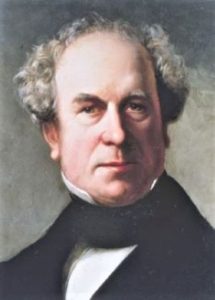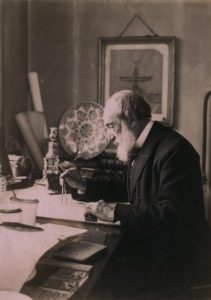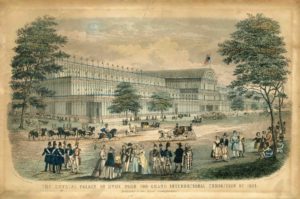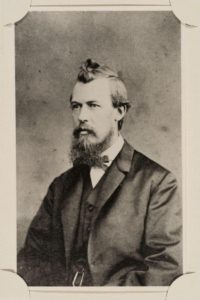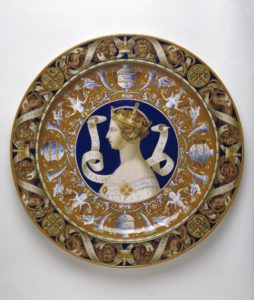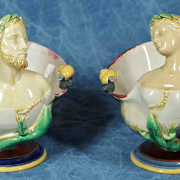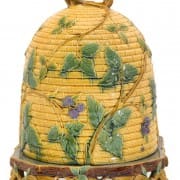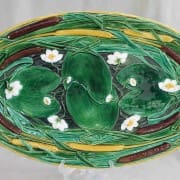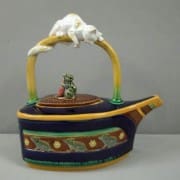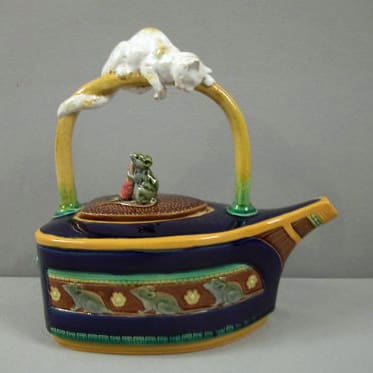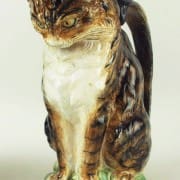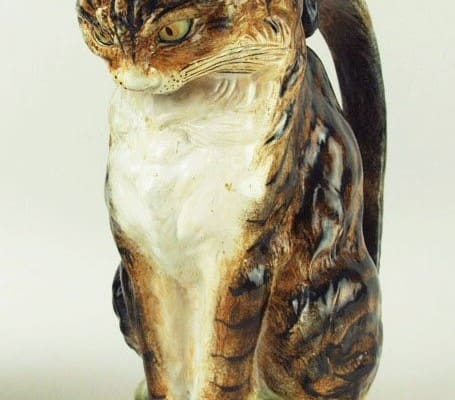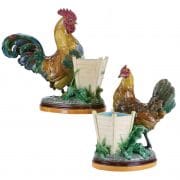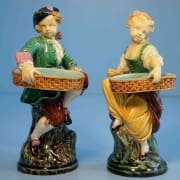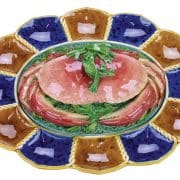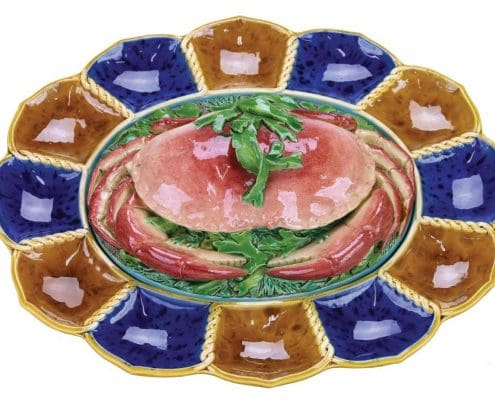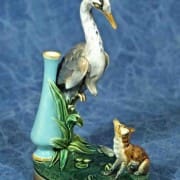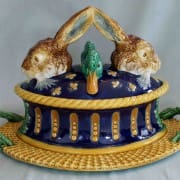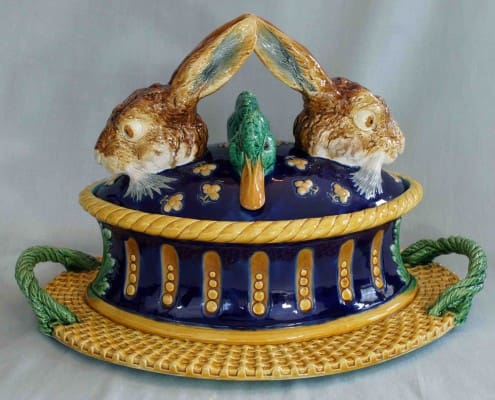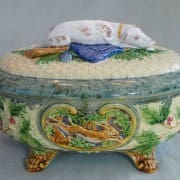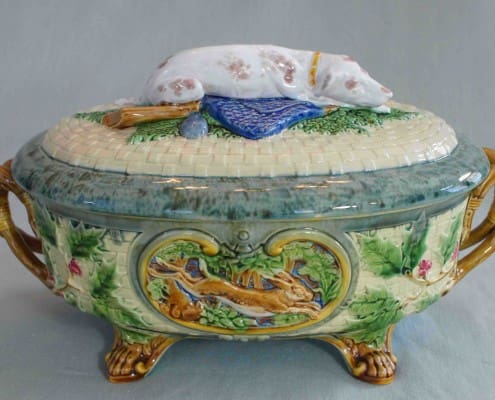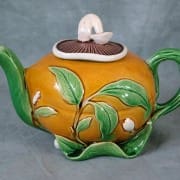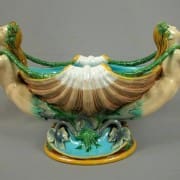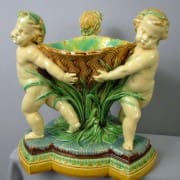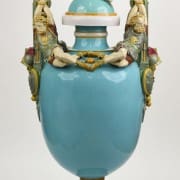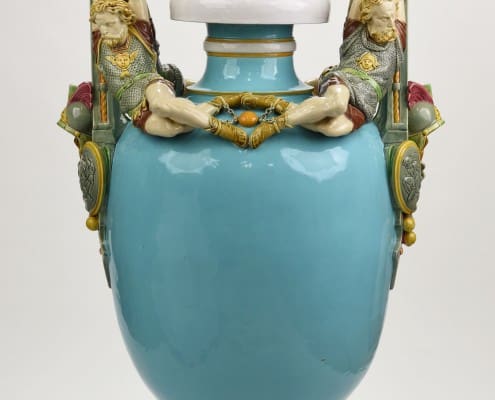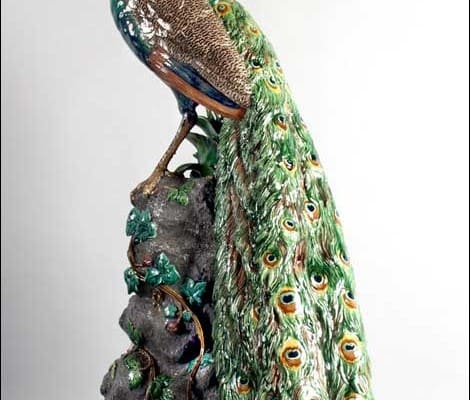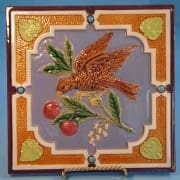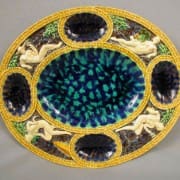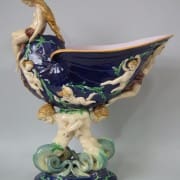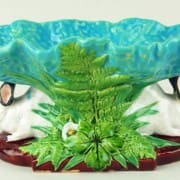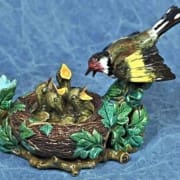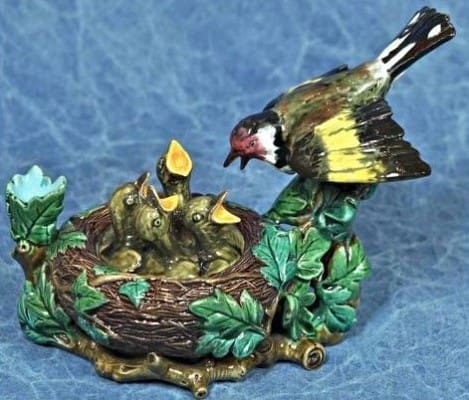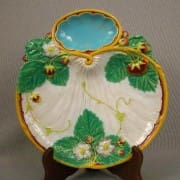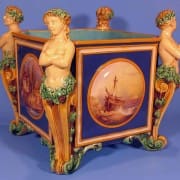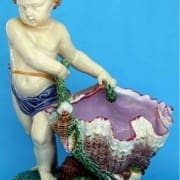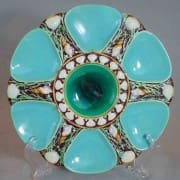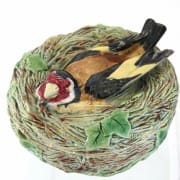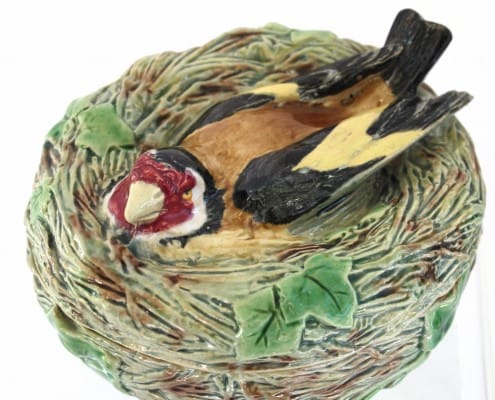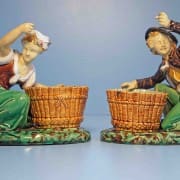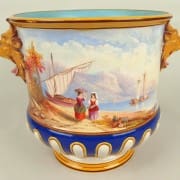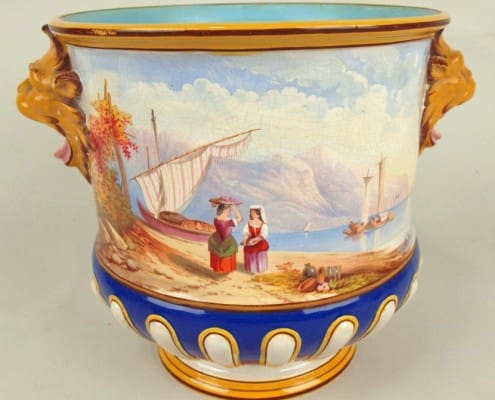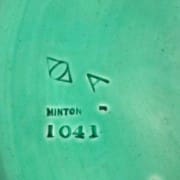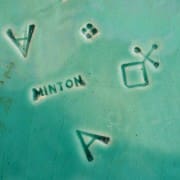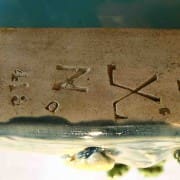Minton
Thomas Minton began his professional life as an engraver and is credited with the design of the popular blue Willow pattern for Josiah Spode. In 1793 Minton entered into a partnership with the Liverpool merchant Thomas Pownall and Joseph Poulson, a Stoke potter. Operating under the name Minton and Poulson, the firm produced blue-printed earthenware and bone china. Although the partnership dissolved in 1823, the following two generations of the Minton family were to shape the future of the ceramic industry in Victorian England and ultimately introduce majolica to the world. Sons Thomas Webb and Herbert Minton joined their father as early as 1808; Herbert being a mere sixteen years of age while representing the firm in London.
Following the death of Thomas Minton in 1836, Herbert briefly entered into a partnership with John Boyle before being joined in in 1845 by nephews Michael Daintry Hollins and Colin Minton Campbell.
Following Herbert’s death in 1858, Hollins managed the firm’s encaustic tile business, operating under the name Minton, Hollins & Co. The equally dynamic Campbell controlled the china factory which operated under the name Herbert Minton & Co. until 1873 and subsequently as “Mintons”. The firm merged with Royal Doulton in 1968.Herbert Minton, a man of singular vision, utilized both his technical prowess and aesthetic talent. Minton combined his manufacturing resources with the experience of French chemist and engineer Leon Arnoux to develop English versions of French and Italian Renaissance pottery. Already experienced in ceramic production in Sevres, Arnoux arrived in England in 1848 and remained at Minton as Art Director until his retirement in 1892.
It was Arnoux who developed the formulas used for Minton’s rare tin-glazed majolica together with the metallic oxide enamels with which it was painted. He also developed lead glazes with a suitable color palette and kiln technology for Minton’s highly successful Palissy ware, later also called ‘majolica’. Minton’s tin-glazed majolica imitated the process and style of Italian Renaissance maiolica popularized by Luca Della Robbia and was initially known as ‘Imitation Majolica’. Minton colored glaze decorated wares imitated the process of 16th century French ceramicist Bernard Palissy and these lead-based glazes were used to decorate most of the firm’s majolica production. Both were first displayed to the public in London at the Crystal Palace Exhibition of 1851 and the products transformed Minton’s profitability for the next thirty years.
Early majolica was also advertised as “Pottery in the Italian Style” but quickly adapted in response to prevailing fashion. In short order, majolica became the must-have home decoration of wealthy Victorians. Taking advantage of the continuing economic and political turmoil in France, Arnoux was also instrumental in recruiting noted artisans from the continent. Modelers Pierre-Emile Jeannest and Albert E. Carrier de Belleuse are credited with the development of majolica in the Anglo-French style.
Paul Comolera produced large scale animal figures including the iconic Minton Peacock. Other important modelers employed by Minton include Hugues Protât, John Henk, Victor Simyan, Hamlet Bourne and Jean-Baptiste Jules Klagmann. The earliest examples of painted majolica, including the rare tin-glazed pieces, were executed by Thomas Kirkby.
Other noted Minton artists include Alfred Stevens, Thomas Allen, Emile Lessore, Edouard Rischgitz, J. Thorley and Louis Jahn who succeeded Leon Arnoux as Art Director in 1893.Minton produced several styles of majolica throughout the Victorian era. Much of the early production was of the Renaissance and Palissy styles and were displayed at international exhibitions in London, Paris, Philadelphia and Vienna. Few of these pieces remain outside of museums.
The later and more typically Victorian pieces were created in the style of Naturalism and reflected the contemporary fascination with the diversity of flora and fauna. Most majolica available to collectors is of this style. Minton produced all manner of decorative and functional table wares in a multitude of designs, sizes and color variations. Owing to the exceptional talent employed by Minton, most of the firm’s majolica production was artistically modeled and precisely glazed. Unsurprisingly, they also command among the highest prices in the marketplace. Most Minton majolica was marked on the undersurface with an impressed “MINTON”, or after 1873 “MINTONS”. Many pieces also carry a three or four digit shape number which can be identified in various archival references. The presence of a raised diamond shaped British registry mark identifies only the date the pattern was registered. An additional impressed symbol may be present and denotes the actual year the piece was produced.
Here is a handy majolica date code guide for British registry marks and Minton date symbols Majolica Date Code Guide PDF
External Links:
Photo Credits:Strawser Auctions
Live Auctioneers
Ebay images
Madelena Antiques
Antiques from Trilogy
Philppe Meunier & Juan-Alonso Defrocourt
Karmason Library

